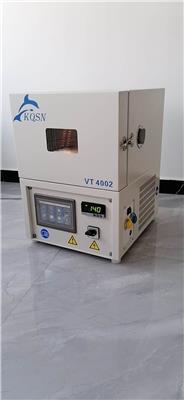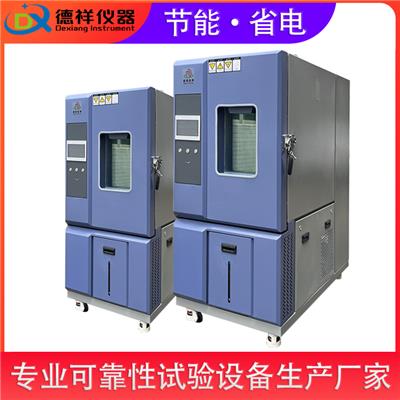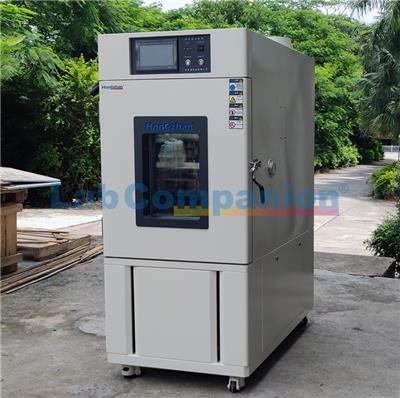Autoclave or Pressure Cooker Test (PCT)
- 时间:2021-08-27作者:广东宏展科技有限公司浏览:43
Autoclave or Pressure Cooker Test (PCT)
Autoclave Test, or Pressure Cooker Test (PCT), or Pressure Pot Test (PPOT), is a reliability test performed to assess the ability of a product to withstand severe temperature and humidity conditions.
It is used primarily to accelerate corrosion in the metal parts of the product, including the metallization areas on the surface of the die. It also subjects the samples to the high vapor pressure generated inside the autoclave chamber. Figure 1 shows examples of autoclave chambers.
| Fig. 1. Examples of Autoclave Chambers from Trio Tech |
Autoclave testing consists of soaking the samples for 168 hours at 121 deg C, ** RH, and 2 atm. Intermediate readpoints at 48H and 96H may also be employed.
Surface-mount samples are preconditioned prior to autoclave testing. Preconditioning simulates the board mounting process of the customer. It normally consists of a bake to drive away the moisture inside the packages of the samples, a soak to drive a controlled amount of moisture into the package, and three cycles of IR or vapor reflow.
The samples are tested after preconditioning, failures from which are considered as preconditioning failures and not autoclave failures. Preconditioning failures should be taken seriously, since these imply that the samples are not robust enough to even withstand the board mounting process.
| Fig. 2. Another Example of an Autoclave Chamber |
Because of the extreme moisture condition during autoclave testing, moisture-related electrical leakage failures may be encountered after the test. Unless predefined to be so, such failures must not be considered as valid PCT failures. Only permanent failures, such as those arising from corrosion, are considered valid PCT failures.
Reliability Tests: Autoclave Test or PCT; Temperature Cycling; Thermal Shock;
THB; HAST; HTOL; LTOL; HTS; Solder Heat Resistance Test (SHRT);
Other Reliability Tests
See Also: Reliability Engineering; Reliability Modeling;
Qualification Process; Failure Analysis; Package Failures; Die Failures
广东宏展科技有限公司专注于快速温度变化试验箱,高低温冷热冲击试验箱,高低温湿热试验箱等
词条
词条说明
(1)密封条:需要经常检查可程式快速温变试验箱密封条的密封性,假如密封条出现变形,就会影响关闭的严丝合缝程度,导致冷气外泄,以此增加耗电量。假如变形严重,应该立即维修更换。(2)摆放位置:放在阴凉通风的位置,避免阳光直射,远离热源,且摆放时可程式快速温变试验箱**部左右两侧及背部都要留有适当的空间,利于散热。这是可程式快速温变试验箱周围的环境温度高将增加试验箱的耗电量。(3)除霜:可程式快速温变试验
一、高低温交变湿热试验箱制冷系统:制冷系统有两个作用:1、对工作室制冷;2、对除湿槽制冷。制冷系统为单级压缩制冷循环,系统由压缩机、风冷凝器、储液器、干燥过滤器电磁阀、膨胀阀及蒸发器组成。制冷系统工作受 “制冷” 开关控制,通过“湿热控制”开关切换对工作室制冷或对除湿槽制冷。二、高低温交变湿热试验箱加热系统:加热系统用于供给工作室热量。有两个作用:1、工作室升温,使工作室温度升高控恒温
恒温恒湿试验箱工作原理以及特点恒温恒湿试验箱可以准确地模拟低温、高温、高温高湿、低温低湿等复杂的自然状环境,实验室一般用于植物培养、育种试验;**、微生物培养、发酵、各种恒温试验、环境试验、水体分析、BOD测定、微生物培养物质变性试验和培养基、血清、**等物品的储存等。广泛应用于医疗卫生、生物制药、农业科研、环境保护等研究应用领域。 恒温恒湿试验箱工作原理恒温恒湿箱由制冷系统,加热系统,
2021年起,公司将继续推行扩大高低温测试设备定期检查维护、防止故障于未然的活动。检查作业的内容包括: ①目视检查 ②损耗程度检查 ③运转声音检查 ④电器绝缘检查 ⑤运转动作检查 ⑥定值测定 ⑦泄漏检查 ⑧供/排水检查
联系方式 联系我时,请告知来自八方资源网!
公司名: 广东宏展科技有限公司
联系人: 曾女士
电 话: 4006282786
手 机: 18688888287
微 信: 18688888287
地 址: 广东东莞常平 常平镇Lab Companion Park
邮 编:
相关推荐
相关阅读
1、本信息由八方资源网用户发布,八方资源网不介入任何交易过程,请自行甄别其真实性及合法性;
2、跟进信息之前,请仔细核验对方资质,所有预付定金或付款至个人账户的行为,均存在诈骗风险,请提高警惕!
- 联系方式
- 相关企业
- 广东格霖科技有限公司
- 广州大冷王测控设备有限公司
- 广东宏展科技有限公司
- 武汉蓝锐环境科技有限公司
- 常州迈倍特试验设备有限公司
- 广东海银试验装备有限公司
- 江苏富奇恒温设备有限公司
- 柏舍(武汉)仪器设备有限公司
- 深圳市铭宇仪器设备有限公司
- 商家产品系列
- 产品推荐
- 资讯推荐


¥58800.00

¥205000.00


¥12800.00



小容量恒温恒湿箱HWS-50A高低温试验箱100L/250升
¥9000.00


¥35000.00





















